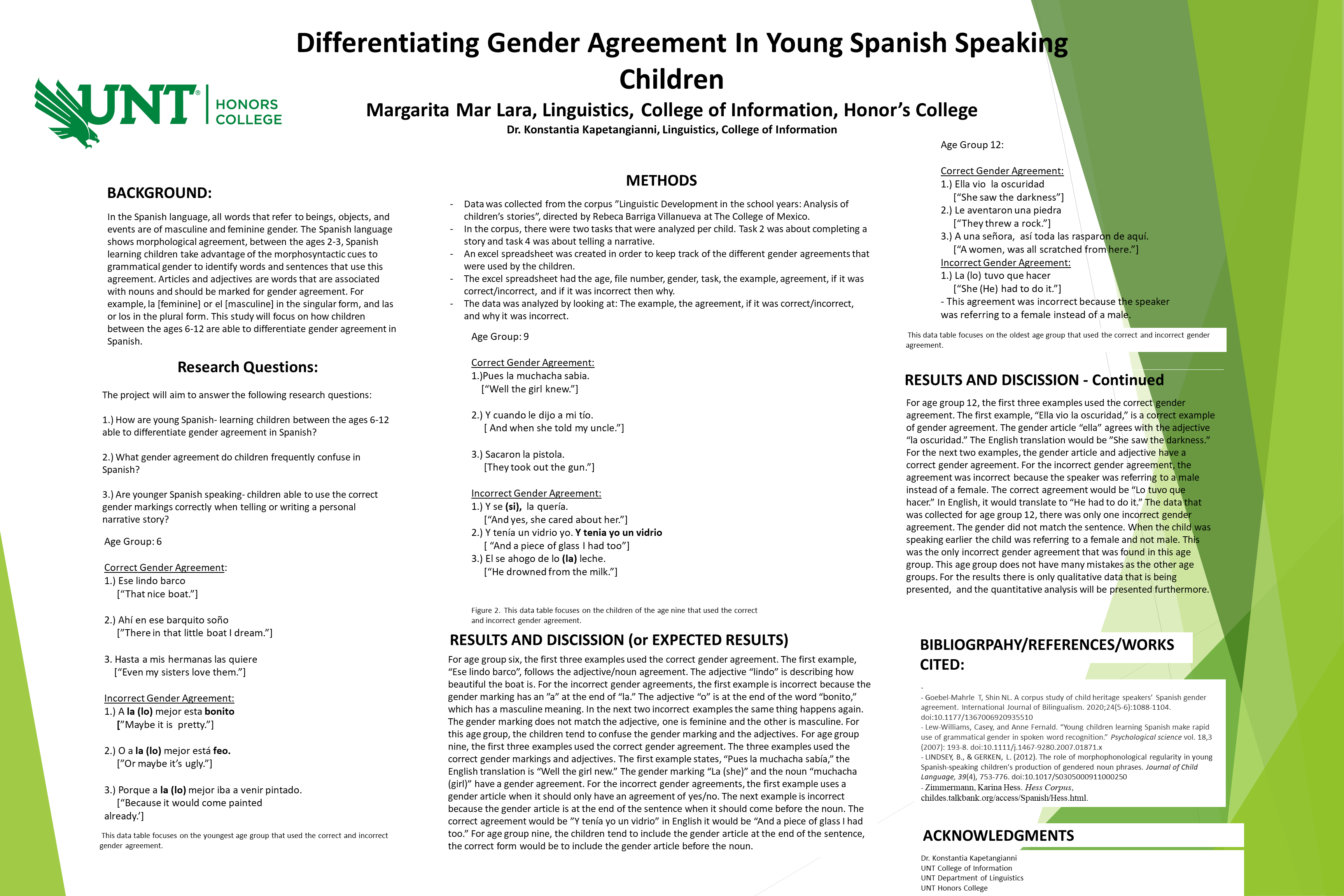First Name:
MargaritaLast Name:
Mar LaraMentor:
Dr. Konstantia KapetangianniAbstract:
In the Spanish language, all words that refer to beings, objects, and events are of masculine and feminine gender. The Spanish language shows morphological agreement, between the ages 2-3, Spanish learning children take advantage of the morphosyntactic cues to grammatical gender to identify words and sentences that use this agreement. Articles and adjectives are words that are associated with nouns and should be marked for gender agreement. For example, la [feminine] or el [masculine] in the singular form, and las or los in the plural form. This study will focus on how children between the ages 6-12 are able to differentiate gender agreement in Spanish. This study will focus on how the children can differentiate by using a qualitative approach by analyzing the obligatory gender markings for the different articles. The following research that I want to answer is, How are young Spanish- learning children between the ages 6-12 able to differentiate gender agreement in Spanish? What gender agreement do children frequently confuse in Spanish? Are younger Spanish-speaking children able to use the correct gender markings correctly when telling or writing a personal narrative story?Poster:

Year:
2021



